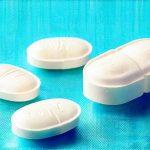Understanding Fluid Loss & Rehydration
Excessive sweating, whether from strenuous physical activity, hot weather exposure, fever, or certain medical conditions, leads to significant fluid loss that can impact both physical performance and overall health. It’s far more complex than simply replacing lost fluids with water; the body loses not only water but also vital electrolytes – minerals like sodium, potassium, magnesium, and chloride – which are crucial for numerous bodily functions. Ignoring adequate rehydration can lead to a cascade of negative effects ranging from mild symptoms like fatigue and muscle cramps to more serious conditions such as heat exhaustion or even heatstroke. Recognizing the signs of dehydration early on is paramount, but proactively planning for fluid replacement before, during, and after activities that induce sweating is the most effective approach.
Rehydration isn’t a one-size-fits-all process. Individual needs vary based on factors like activity level, climate, body weight, sweat rate, and underlying health conditions. A sedentary individual in a cool environment will have drastically different rehydration requirements compared to an endurance athlete competing in scorching heat. Therefore, understanding your personal fluid loss patterns and tailoring your hydration strategy accordingly is essential for maintaining optimal performance and well-being. This article aims to provide practical guidance on safe and effective rehydration techniques after excessive sweating, focusing on restoring both fluids and electrolytes for a complete recovery.
The Science of Sweat & Electrolyte Balance
Sweat isn’t just water; it’s a complex fluid carefully formulated by the body to regulate temperature. Its composition varies between individuals and is influenced by factors like genetics, acclimatization, and fitness level. However, typically sweat contains water, sodium chloride (salt), potassium, magnesium, calcium, and trace amounts of other minerals. The primary purpose of sweating is thermoregulation – cooling the body down as sweat evaporates from the skin’s surface. When we lose significant amounts of fluid through sweat, it disrupts this delicate balance, leading to dehydration and electrolyte imbalances.
Electrolytes play critical roles in countless physiological processes. Sodium, for example, helps maintain blood volume and is essential for nerve and muscle function. Potassium is vital for maintaining fluid balance within cells and supports proper heart rhythm. Magnesium contributes to muscle relaxation and energy production. A deficiency in any of these electrolytes can impair performance, cause cramping, and even lead to serious health complications. Simply drinking large volumes of water without replacing lost electrolytes can actually dilute electrolyte concentrations further, exacerbating the problem – this is known as hyponatremia. Therefore, effective rehydration requires a balanced approach that addresses both fluid loss and electrolyte depletion. Understanding your body’s response to exercise is key; you might find recovery after radical prostatectomy surgery impacts hydration needs.
Rehydration Strategies: Beyond Just Water
Effective rehydration begins before sweating even occurs. Pre-hydrating helps ensure you start an activity with adequate fluid reserves. During prolonged activities with significant sweat loss, consistent small sips of fluids are far more effective than infrequent large gulps. But the real focus is on post-sweating recovery. The goal isn’t just to replace lost volume, but to restore electrolyte balance as well.
Plain water remains important for rehydration, especially after mild to moderate sweating. However, for substantial fluid loss, consider incorporating electrolyte-rich beverages or foods into your recovery plan. Sports drinks containing sodium and potassium can be beneficial, but it’s crucial to choose options with lower sugar content. Alternatives include coconut water (naturally rich in electrolytes), oral rehydration solutions specifically designed for rapid fluid replacement, or even homemade electrolyte drinks using ingredients like fruit juice, a pinch of salt, and a squeeze of lemon. Food sources such as bananas (potassium), salty snacks (sodium – in moderation!), and leafy green vegetables (magnesium) can also contribute to electrolyte replenishment. Consider incorporating safe hydration snacks after physical activity into your routine.
Recognizing Dehydration & Its Stages
Early detection is key when it comes to addressing dehydration. The body provides several signals indicating fluid loss, though these signs can be subtle initially. Mild dehydration often presents as: – Thirst – Dry mouth and throat – Dark yellow urine – Decreased urination frequency – Fatigue – Headache As dehydration progresses, symptoms become more pronounced and potentially dangerous: – Extreme thirst – Very dark urine or no urine at all – Dizziness and lightheadedness – Muscle cramps – Confusion – Rapid heartbeat – In severe cases, loss of consciousness.
It’s important to note that thirst is not always a reliable indicator of hydration status. By the time you feel thirsty, you may already be mildly dehydrated. Therefore, proactively monitoring urine color and paying attention to other early warning signs are crucial. Athletes and individuals working in hot environments should develop a habit of regularly assessing their hydration levels throughout the day, even when not actively sweating. Don’t wait until you’re experiencing severe symptoms before taking action – preventative measures are always preferable. Remember that urinalysis after surgery can also help assess your hydration status.
Practical Steps for Rehydration
Rehydrating effectively involves a systematic approach tailored to the extent of fluid loss. Here’s a step-by-step guide: 1. Assess Fluid Loss: Estimate how much fluid you’ve lost based on activity duration, intensity, and environmental conditions. Weighing yourself before and after exercise can provide an accurate measure of fluid loss (one kilogram approximately equals one liter of water). 2. Initial Rapid Rehydration: Consume 1.5 times the amount of fluid lost within the first few hours. For example, if you lost 1 kg during a workout, drink 1.5 liters of fluid. 3. Electrolyte Replenishment: Choose fluids containing electrolytes or supplement with electrolyte-rich foods. Avoid sugary drinks as they can hinder absorption. 4. Continued Hydration: Continue sipping fluids throughout the day to maintain adequate hydration levels.
It’s also vital to avoid rapid rehydration with large volumes of water immediately after intense sweating, as this can lead to hyponatremia. Instead, focus on gradual fluid replacement over several hours. Consider your individual needs and adjust your strategy accordingly. For example, someone who sweats profusely may require a more aggressive rehydration plan than someone who only experiences mild sweat loss. Safe daily micro-movements to ease pressure can also help support the recovery process.
Individual Factors & Considerations
Rehydration needs are highly individualized. Several factors influence how much fluid you need to replace after sweating: – Body Weight: Larger individuals generally lose more fluids and require greater replenishment. – Sweat Rate: Some people naturally sweat more than others, even under the same conditions. Determining your personal sweat rate can help you estimate fluid loss accurately. – Climate & Environment: Hot and humid environments increase sweat rates significantly. – Activity Level & Duration: More intense and prolonged activities lead to greater fluid loss. – Acclimatization: Individuals acclimatized to hot weather tend to sweat more efficiently, conserving electrolytes. – Underlying Health Conditions: Certain medical conditions (e.g., kidney disease) may affect hydration needs.
Individuals with pre-existing health conditions should consult with a healthcare professional to determine the best rehydration strategy for their specific circumstances. It’s also important to listen to your body and adjust your fluid intake based on how you feel. If you experience any concerning symptoms, such as dizziness, confusion, or muscle cramps, seek medical attention immediately. Prioritizing personalized hydration plans is crucial for maximizing performance and safeguarding health after excessive sweating. Maintaining proper hydration can even help with urethral recovery steps after long physical activity. For those looking to improve their overall wellness, consider a look at an anti-inflammatory diet after urology surgery. If you are concerned about bladder function, understanding the role of safe citrus use in bladder-conscious cooking is also important.





















